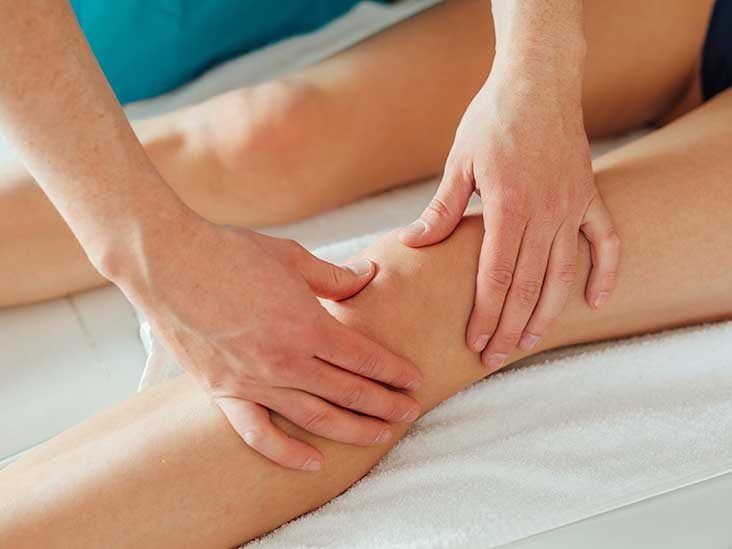Charcot Marie Tooth Disease
What Is Charcot-Marie-Tooth Disease?
Charcot-Marie-Tooth disease (CMT) is an inherited peripheral nerve disorder. Your peripheral nerves are located on the surface of your brain and your spinal cord. These nerves connect your central nervous system to the rest of your body.
CMT was named after the physicians who discovered it in 1886: Jean-Martin Charcot, Pierre Marie, and Henry Tooth. This condition is sometimes called hereditary motor and sensory neuropathy, or personal muscular atrophy.
According to the National Institute of Neurological Disorders and Stroke, CMT is one of the most common inherited neurological disorders, affecting 1 out of every 2,500 people in the United States.
What Are the Symptoms of Charcot-Marie-Tooth Disease?
Symptoms of CMT normally occur in adolescence, but they can appear as late as mid-adulthood. CMT affects the nerves that control your voluntary muscle activities.
Common symptoms include:
- weakness of the leg muscles
- difficulty standing
- frequent tripping or stumbling
- difficulty walking
- high stepping when walking
Physical signs include:
- foot deformity (such as hammertoes or high arches)
- inverted lower legs
As CMT progresses, you may experience difficulty moving your fingers, hands, wrists, feet, and tongue.
What Causes CMT?
CMT is a congenital disease. This means it’s present at birth.
The condition is caused by one or more defective genes. In most cases, you inherit the defective genes from one or both of your parents. The defects disturb the function and structure of your peripheral nerve sheaths and axons. These are the insulating layers around your nerves.
In some rare cases, people are born with CMT spontaneously, without inheriting a defective gene from their parents.
There are five main types of CMT, and each has its own cause:
- CMT1is commonly caused by a duplication of a gene on chromosome 17. This gene controls the production of your nerves’ protective myelin sheath. CMT1 is also caused by other gene defects.
- CMT2results from a defect in your peripheral nerve cells’ axon. This is caused by a defect in your mitofusin 2 gene.
- CMT3, also called Dejerine-Sottas disease, is caused by a mutation in your P0 or PMP-22 gene. This type of CMT is rare.
- CMT4is caused by several gene mutations. These genes include GDAP1, MTMR13, MTMR2, SH3TC2, NDG1, EGR2, PRX, FDG4, and FIG4.
- CMTXis caused by a point mutation in the connexin-32 protein on your X chromosome.
CMT1 is the most common type of CMT. All types of CMT weaken the signals travelling from nerves in your extremities to your brain.
Diagnosing CMT
To diagnose CMT, your doctor will order tests to help determine the cause and extent of your nerve damage. These tests may include a nerve conduction study, electromyography, nerve biopsy, and genetic testing.
A nerve conduction study can test the function of electrical signals in your nerves. During this test, a neurologist will place small electrodes on your skin. Then, they’ll transmit a small amount of electricity to the electrodes. A weak response may indicate CMT.
An electromyography test (EMG) is performed by inserting a thin needle into one of your muscles. This needle is attached to a wire that connects to a machine. Your doctor will ask you to flex and then relax your muscle, while the machine measures your muscle’s electrical activity.
A nerve biopsy is performed by a surgeon. This procedure involves removing a piece of a nerve from your calf for testing. This nerve sample is examined for the appearance of CMT.
Genetic testing is used to check for defects in the genes that cause CMT. This is performed using a sample of your blood.
Treating CMT
Physical therapy is a common treatment for people with CMT. It involves many stretches and light exercises. This therapy helps to increase your muscle strength and prevent atrophy, or muscle loss.
If you lose function in your extremities, you may be given assistive devices to help you grab, reach, and push objects. Thumb splints are also available for people having difficulty grabbing items. You may also be given orthopedic devices, such as braces and splints, to prevent injuries due to weak legs and to increase your stability.
If you have a severe foot deformity, it may be treated by a combination of orthotics (specialized shoes) and surgical corrective procedures.
Long-Term Outlook
The severity of CMT symptoms varies from one person to another. CMT can lead to deformities and loss of sensation in your feet. To help relieve symptoms and prevent complications, inspect your feet daily for wounds, ulcers, and infections. Wear properly fitted shoes that provide good ankle support. If you have foot deformities, consider investing in custom-made shoes.
To lower your risk of injury and function loss, take good care of your muscles and joints. For example, stretch regularly and exercise daily. If you’re unsteady on your feet, consider using a cane or walker to improve your stability.

